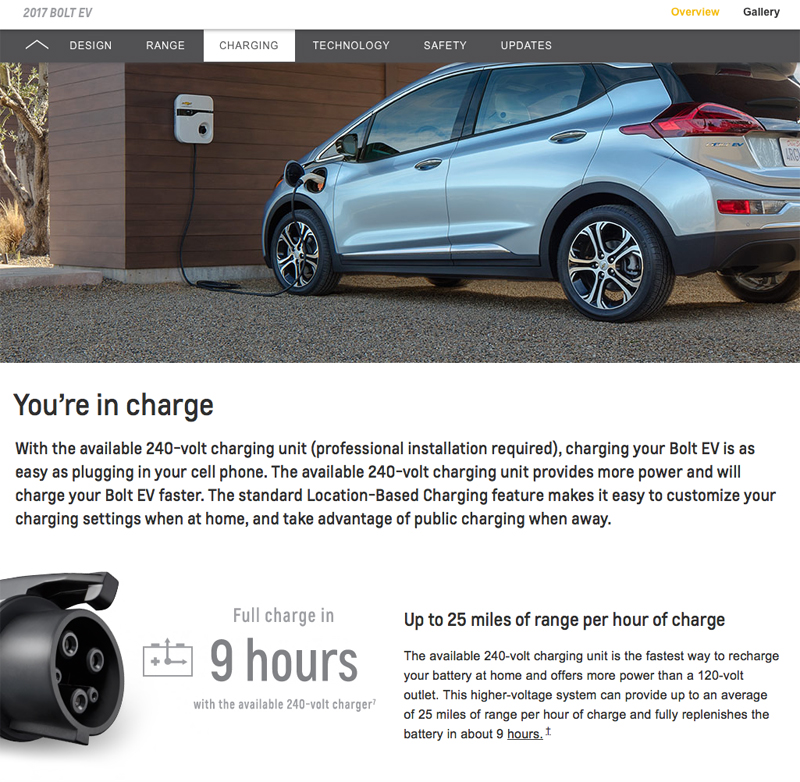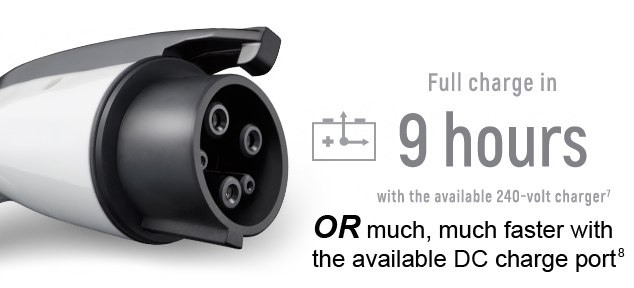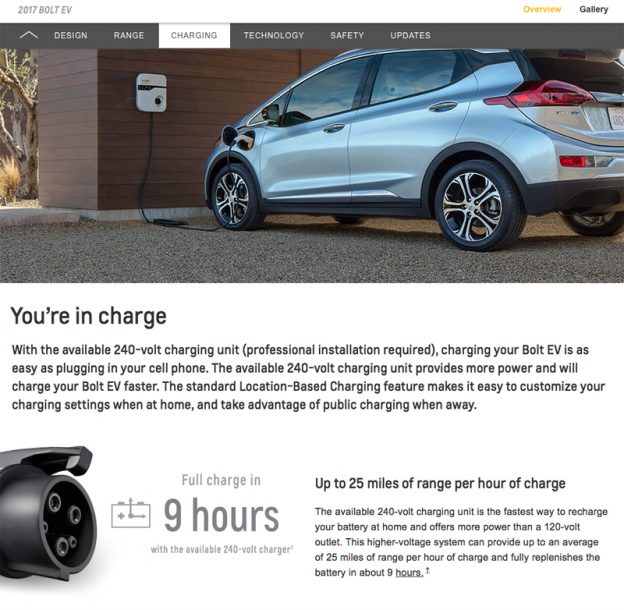August 2016. California.
EDITOR’S NOTE: When I wrote this GM made no mention of DC charging the Bolt EV on their website. Instead they had a large graphic saying “9 hours to fully charge”. Thankfully that has changed, and the Bolt is on the road in big numbers where I live. I now have 2 friends who drive the Bolt and they love it. But, interestingly enough the day that Chevy announced the first Bolts were being delivered to new owners, Chevrolet dealerships placed ads on the radio saying if you get an EV, you better get a tent and prepare to camp out because it takes 21 hours to charge an EV. This revealed a lack of centralized effort and was the disappointing result of competing interests both within GM, and between GM and dealerships.
The release of the Chevy Bolt is quickly approaching. And by most accounts it looks to be very good. Test drive reviews and ride-along reviews have been very positive, and the specs look great. Specifically the promise of more than 200 miles of range at an affordable price.
GM is heavily promoting these two aspects of the Bolt: driving range and price point. With a target starting price of $30,000 after rebates, the Bolt will be the first ‘affordable’ EV on the market with over 200 miles of range.

Range? Check. Price? Check. Charging time???
But something is missing. Increased adoption of EVs will only occur when three conditions are met: 1) the car must be sold at an affordable price; 2) it must have sufficient driving range; and 3) the car must be capable of charging rapidly.
Price? Check. Range? Check. But what about the 3rd condition, charging speed?
Those who’ve been following development of the Chevy Bolt over the past year know that the car will be offered with the CCS DC charging port, just like it’s sister car the Chevy Spark. DC charging dramatically reduces charging time and will allow the Bolt to quickly recharge for high mileage drivers and those on long distance trips. But when it comes to DC charging, GM is oddly silent.
Go to the official website for the Bolt (click here to check it out), and what you see is a very prominent message stating “Full charge in 9 hours”. No mention of rapid DC charging anywhere. It’s as if that DC charging port doesn’t even exist.

The Chevy Bolt website, as of August 29, tells us it takes 9 hours to charge the Bolt.
This is a big omission and it raises a legitimate question: Does GM actually want to sell the Bolt?
The average person who has never driven an electric car will very likely see that message – 9 hours to charge – and keep on walking. It will be a deal breaker. Auto makers usually focus on exciting features that help sell cars. 9 hours is not one of them. 9 hour charging stops do not figure into the dreams and aspirations of the average driver planning a summer vacation or annual trip to visit family for the holidays.
We could speculate why GM has left out this very important detail. Perhaps they’ve dropped the DC charge port from the final design? Doubt it. Perhaps they haven’t yet calculated charge time on 125 or 200 amp DC chargers? Inconceivable. Perhaps GM is concerned about uneven rollout of DC charging stations across the country? Unlikely. In fact, early this year GM stated they would not get involved in setting up or promotoing DC charging infrastructure. So perhaps they don’t understand that DC charging will be essential for mass adoption of EVs? Or perhaps they do.
Just a few days ago news stories announced that VW is planning a 300 mile EV that will charge in 15 minutes. This is a car that is years from production, and who knows if it’ll actually get built. But for all it’s faults, VW gets it: charging speed is important. And it really doesn’t need pointing out, but yet I will, that Tesla’s extensive, reliable, worldwide Supercharger network is a huge selling point for their cars.

Here’s an example of advertising from a company trying to sell EVs.
In contrast, the Bolt is scheduled to roll out factory doors in a matter of months and the official Chevy Bolt website tells us this car will take a long time to charge, and it shouldn’t. So here’s a suggestion. Why not modify the website? Advertise. Let folks know about the DC charge port. It would help.

A slight change to the website might help.
Final note: the author is well aware that Level 2 charging serves the majority of our driving needs.

